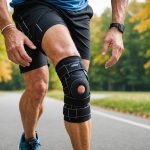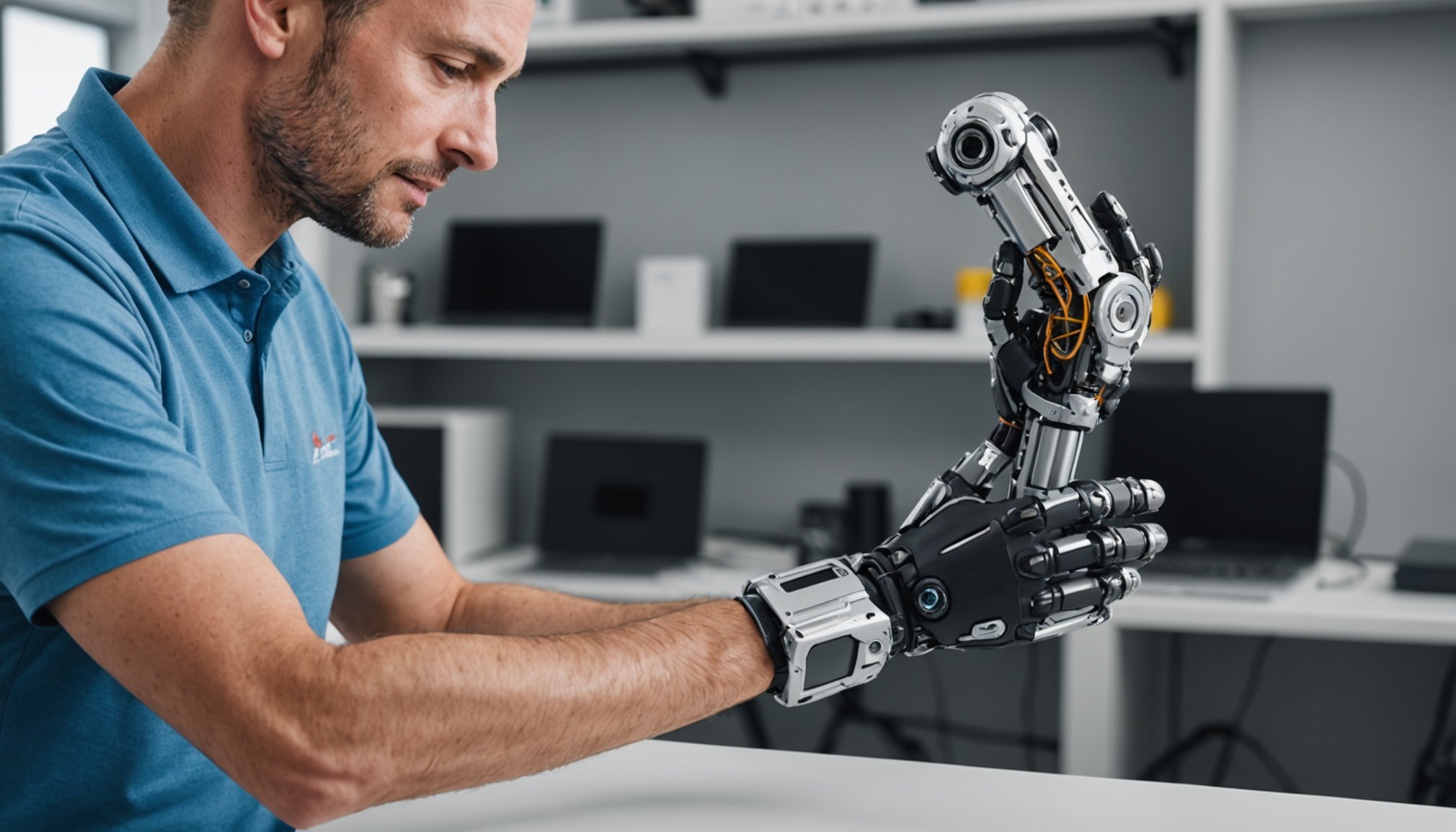Revolutionizing Mobility: Discover the Cutting-Edge Advancements in Upper Limb Robotic Prosthetics for Amputees
The Evolution of Prosthetic Limbs
The concept of prosthetic limbs has been around for centuries, but the recent advancements in technology have transformed these devices from simple replacements to sophisticated, robotic extensions of the human body. For amputees, particularly those with upper limb loss, these advancements are not just about regaining physical functionality but also about restoring a sense of normalcy and independence.
In the past, prosthetic limbs were often cumbersome and lacked the fine motor control that natural limbs provide. However, with the integration of modern computing, advanced materials, and innovative surgical techniques, the field of prosthetics has made significant strides. For instance, a study published last year described an above-the-elbow bionic arm that enabled the recipient to control every finger of his robotic hand, a feat that was previously unimaginable.
This might interest you : Effective Strategies to Overcome Needle Fear in Children During Vaccination
Advanced Control Systems: Bridging the Gap Between Human and Machine
One of the key challenges in developing effective prosthetic limbs is creating a seamless interface between the human body and the prosthetic device. This is where neural interfaces and advanced control systems come into play.
Neural Interfaces and Muscle Signals
Researchers like Tyler Clites and his team at UCLA are working on integrating muscle pairs that provide recipients with a sense of the position and movement of their bionic limbs. This technique, known as agonist-antagonist myoneural interface (AMI), involves surgically reconstructing muscle pairs to generate signals that control robotic joints. These signals are so precise that they allow users to control their prosthetic limbs with remarkable accuracy, almost as if they were natural limbs.
Also to discover : Latest Advances in Peanut Allergy Prevention for Infants at High Risk
Magnetomicrometry: A New Frontier
Another innovative approach is magnetomicrometry, developed by researchers at MIT. This method involves placing magnetic spheres inside muscles to measure their movement. These measurements are then used to directly control the bionic prosthesis, offering a more reliable and precise control mechanism compared to surface electrodes. As Hugh Herr, a pioneer in this field, notes, “With these magnets, we can measure what we care about and use it to directly control the bionic prosthesis.”
Sensory Feedback: The Missing Piece
Sensory feedback is crucial for natural limb function, and its absence in traditional prosthetics has been a significant drawback. Recent advancements have focused on providing amputees with sensory feedback from their prosthetic devices.
Bio-Inspired Solutions
Several groups have made progress in providing sensory feedback for upper limb amputees using robotic arms. For example, researchers have developed systems that use electrodes to stimulate nerves, allowing users to feel sensations such as touch and pressure. This sensory feedback enhances the user’s ability to manipulate objects with precision and naturalness, significantly improving their quality of life.
Practical Applications and Real-World Impact
These advancements are not just theoretical; they are being tested and implemented in real-world scenarios.
Clinical Trials and User Experiences
A recent clinical trial involving 14 people with below-the-knee amputations demonstrated the efficacy of AMI-based bionic legs. Participants who underwent the AMI procedure showed a significant increase in walking speed, from 1.26 meters per second to 1.78 meters per second, which is comparable to that of people without amputations. This improvement in mobility is a testament to the potential of these new technologies to transform the lives of amputees.
User-Centric Design
The design of these prosthetic devices is increasingly user-centric, focusing on comfort, usability, and natural movement. For instance, the use of osseointegration, where wires between implanted electrodes and the prosthesis run through a titanium bolt, reduces the discomfort associated with traditional socket attachments. Additionally, new attachment methods using electromagnets are being developed to avoid the permanent hole required by titanium bolts, offering greater flexibility and comfort for users.
Table: Comparing Traditional and Advanced Prosthetic Limbs
| Feature | Traditional Prosthetic Limbs | Advanced Robotic Prosthetic Limbs |
|---|---|---|
| Control Mechanism | Limited, often relying on manual adjustments | Advanced neural interfaces and muscle signals |
| Sensory Feedback | None or minimal | Integrated sensory feedback through electrodes or magnetic spheres |
| Mobility | Restricted, often resulting in awkward movements | Natural and precise movements, comparable to those of non-amputees |
| Comfort | Often causes pain and discomfort due to socket issues | Improved comfort through osseointegration and electromagnet attachments |
| Customization | Limited customization options | Highly customizable to meet individual user needs |
| Technology Integration | Basic mechanical components | Advanced computing, motors, and batteries |
Future Directions and Potential
The future of prosthetic limbs looks promising, with ongoing research and development aimed at further enhancing these devices.
Cross-Disciplinary Collaborations
Collaborations between bioengineers, surgeons, and neuroscientists are crucial for the continued advancement of prosthetic technology. For example, Hugh Herr’s work at MIT involves a multidisciplinary approach, combining surgical techniques with advanced robotics and neural interfaces. Such collaborations are driving innovation and pushing the boundaries of what is possible.
Commercial Viability
While these technologies are still in the experimental phase, there is a clear path towards commercial viability. As Herr notes, “When you marry surgical techniques like AMI and RPNI with something like magnetomicrometry, we believe it’s going to be game over.” This suggests that once these techniques are perfected, they will become mainstream, offering amputees around the world access to these life-changing technologies.
Practical Insights and Actionable Advice
For amputees and healthcare professionals interested in these advancements, here are some practical insights and actionable advice:
- Stay Informed: Keep up-to-date with the latest research and clinical trials. Websites like Google Scholar and PubMed are excellent resources for finding scholarly articles and research papers.
- Consult Specialists: Engage with specialists who are at the forefront of prosthetic technology. They can provide personalized advice and help navigate the options available.
- Participate in Clinical Trials: If possible, participate in clinical trials to contribute to the development of these technologies and potentially benefit from early access to cutting-edge prosthetics.
- Focus on Rehabilitation: Rehabilitation is key to adjusting to new prosthetic devices. Work with physical therapists who have experience with advanced prosthetics to maximize the benefits of these devices.
The advancements in upper limb robotic prosthetics are nothing short of revolutionary. From neural interfaces and sensory feedback to user-centric design and cross-disciplinary collaborations, these technologies are transforming the lives of amputees. As we continue to push the boundaries of what is possible, it is clear that the future of mobility for amputees is brighter than ever.
Detailed Bullet Point List: Key Advancements in Upper Limb Robotic Prosthetics
-
Neural Interfaces:
-
Use of agonist-antagonist myoneural interface (AMI) to generate precise control signals.
-
Integration of muscle pairs to provide a sense of position and movement.
-
Magnetomicrometry involving magnetic spheres inside muscles for precise control.
-
Sensory Feedback:
-
Development of systems that use electrodes to stimulate nerves and provide sensations like touch and pressure.
-
Enhanced user experience through real-time sensory feedback.
-
Advanced Control Systems:
-
Use of advanced computing and algorithms to interpret and respond to neural signals.
-
Real-time control mechanisms that mimic natural limb movements.
-
User-Centric Design:
-
Osseointegration to reduce discomfort associated with traditional socket attachments.
-
Electromagnet attachments to avoid permanent holes and enhance flexibility.
-
Clinical Trials and User Experiences:
-
Significant improvements in mobility and natural movement observed in clinical trials.
-
User feedback highlighting enhanced comfort and usability.
-
Future Directions:
-
Continued research in cross-disciplinary collaborations between bioengineers, surgeons, and neuroscientists.
-
Potential for commercial viability and widespread adoption of these technologies.
By understanding and leveraging these advancements, we can look forward to a future where prosthetic limbs are not just replacements but extensions of the human body, enhancing the quality of life for amputees worldwide.











